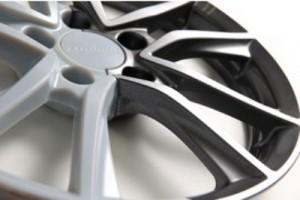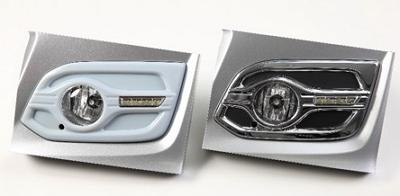It’s a growth market as automobile customization becomes a way for auto owners to set themselves apart from the madding crowd, and Stratasys is at the forefront of developing and prototyping the car accessories. One example? Honda Access Asia and Oceania Company Limited uses Stratasys systems to create their full-range lineup of Honda Cars Genuine.
HAC’s close ties with Honda Motor and Honda R&D mean they can development and deliver those Honda Genuine accessories via a consistent system that covers all stages of a product’s life from research and planning to development and delivery.
According to Hiroshi Takemori, a senior researcher for the Honda Access product planning department, incorporating Stratasys 3D printing into his company’s product design and prototyping process has resulted in rapid design cycles which are superior to the traditional methods which relied on CNC milling.
HAC creates and sells their custom add-on parts for Honda vehicles from their headquarters in Saitama Prefecture, Japan–each vehicle model can have up to 300 possible accessories.
“We have to take into account a range of considerations, such as regional driver preferences and climate and road surface conditions when designing the accessories, offering distinct specifications according to a country’s needs and demand,” says Takemori.
 The wide range of parts that can be customized from body trim, wheels, mirrors and knobs means customers are able to make their cars reflect their personalities, and Takemori cites one popular Honda model as an example–the CR-V sports utility vehicle.
The wide range of parts that can be customized from body trim, wheels, mirrors and knobs means customers are able to make their cars reflect their personalities, and Takemori cites one popular Honda model as an example–the CR-V sports utility vehicle.
“In the United States, the vehicle is marketed to parents who use the vehicle to pick up and drop off their children, but in China, it is positioned as the ultimate SUV and a status symbol,” Takemori says of the CR-V. “Since the vehicle body is built to the same standards worldwide, we use the accessories to give the car a little regional flavor.”
The Stratasys 3D printing process is used to make certain the prototyped parts feature an accurate fit and can be used for critical functional testing.
Designers at Honda Access have been using 3D printing as part of their product development since 2006. Strong internal demand for the process from designers meant the company went on to purchase their own Objet Eden500V, and using Stratasys PolyJet 3D printing materials, Honda Access found the Vero line of rigid opaque materials ideal for their purposes. The parts are often painted with a clear coat to approximate the final product finish of the prototypes.

Honda fog light garnish prototype produced on the Stratasys Objet Eden500V 3D Printer (left); final product (right)
Prototyping with 3D printing allows their designers to make rapid modifications to product designs and makes creating iterations much faster as the entire process can take place in-house. The Honda Access team has used the technology to tighten design schedules by eliminating outsourcing delays.
3D printing as part of the product design and prototyping cycle offers a number of advantages to the team at Honda.
“3D printers allow us to synchronize the development schedule with that of the vehicle itself and create the accessory parts simultaneously, improving both the quality and speed of the prototype process. The technology has become indispensable for our business,” Takemori says.
Do you use 3D printing to prototype or test your products? Let us know in the Honda Access and Stratasys forum thread on 3DPB.com.
Subscribe to Our Email Newsletter
Stay up-to-date on all the latest news from the 3D printing industry and receive information and offers from third party vendors.
You May Also Like
Gorilla Sports GE’s First 3D Printed Titanium Cast
How do you help a gorilla with a broken arm? Sounds like the start of a bad joke a zookeeper might tell, but it’s an actual dilemma recently faced by...
Nylon 3D Printed Parts Made More Functional with Coatings & Colors
Parts 3D printed from polyamide (PA, Nylon) 12 using powder bed fusion (PBF) are a mainstay in the additive manufacturing (AM) industry. While post-finishing processes have improved the porosity of...
$25M to Back Sintavia’s Largest Expansion of Metal 3D Printing Capacity Since 2019
Sintavia, the digital manufacturing company specializing in mission-critical parts for strategic sectors, announced a $25 million investment to increase its production capacity, the largest expansion to its operations since 2019....
Velo3D Initiates Public Offering in a Bid to Strengthen Financial Foundations and Drive Future Growth
Velo3D (NYSE: VLD) has been among a number of publicly traded 3D printing firms that have attempted to weather the current macroeconomic climate. After posting a challenging financial report for 2023,...

































